PRESCRIBED FIRE?
PLANNED BURNS, PLUS FUEL MANAGEMENT, MAY BE RX FOR WESTERN CAPE
By Jennifer Fill and Brian Van Wilgen
A much greater concern, however, is the alien pine trees that burn more intensely and result in greater fire severity than does natural fynbos vegetation.
The all too familiar hue-and-cry was raised in Cape Town, South Africa, when wildfires erupted on the slopes of Table Mountain on April 18. The fires burned more than 600 hectares, tragically damaging numerous University of Cape Town buildings, including irreplaceable libraries and historical sites. Neighborhoods and university students evacuated, and more than 250 government and volunteer firefighters and resources were deployed to the scene. Stunned citizens and those watching around the world were asking: How did this happen?
Large wildfires are a familiar anxiety not only for people living in South Africa, but also in places such as the western United States, Australia, Canada, Greece, and Spain. It seems that all it takes is one spark and thousands of hectares are burning. Although this observation might suggest that the way to control fire is to control the source of the spark, it takes more than just an ignition source to set the mountainside alight. All wildland fires depend on the right mix of three key ingredients: weather, fuel, and ignition.
Hot, dry, and windy weather is ideal for fire ignition and spread. Regions such as the Western Cape of South Africa and the west coast of California have weather patterns that are very conducive to wildfires. Cool, wet winters alternate with hot, dry, and often windy summers. High temperatures and low humidity in summer allow vegetation to dry out, and once the fire has begun, high winds fan the flames. Temperatures on the day the Table Mountain fires started rose to more than 36 C with wind speeds of 45 km/hr, and relative humidity below 10 per cent.
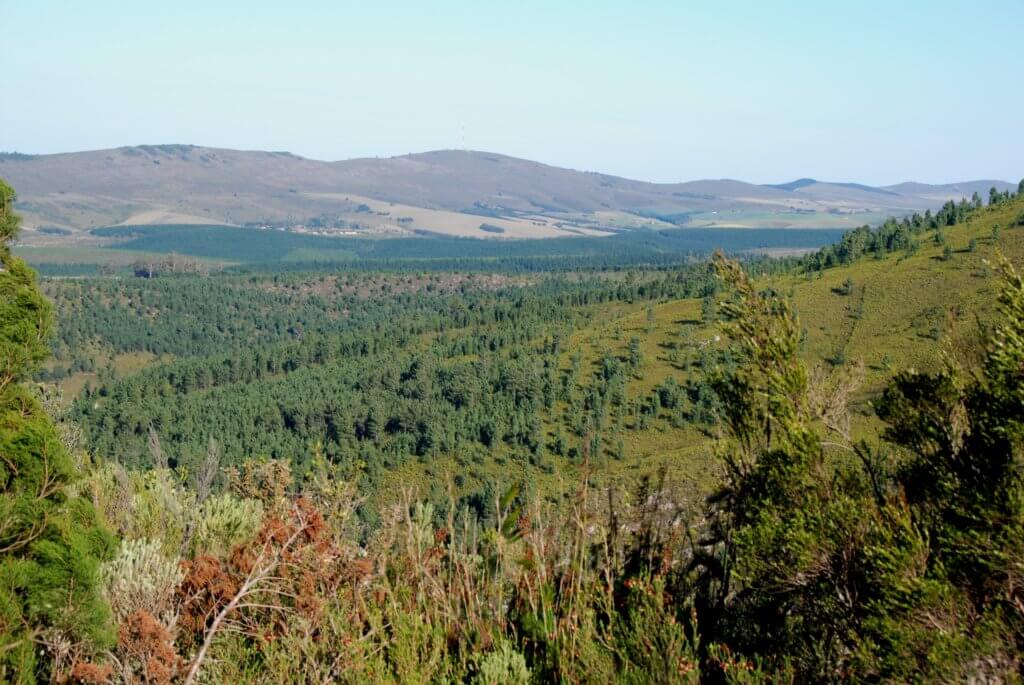
Photo by Jennifer Fill.
The 2015 Cape fires burned more than 6,900 hectares around Cape Town alone, when wind gusts were more than 100 km/hr. To put this in perspective, weather for lighting safe prescribed fires is roughly considered to be relative humidity above 25 per cent and wind speeds of five km/hr or less. Such gusty winds made the Table Mountain fire that much harder to contain and likely sent sparks flying dozens of meters to kilometers ahead of the flaming front.
Not only did the weather set the stage, but the vegetation on Table Mountain was like a tinderbox under those conditions. The fynbos vegetation on the slopes of Table Mountain is a shrubby, biodiverse ecosystem unique to the Western Cape. It is structurally very similar to shrublands in other Mediterranean regions, like chaparral in California.
Many fynbos species, including endemics (species unique to this ecosystem), are dependent on fires for reproduction, so fire is not always harmful from an ecological perspective. These shrublands are well known to be highly flammable and to recover rapidly after fire (witness the post-fire recovery of vegetation after the 2015 fires in the Western Cape).
A much greater concern, however, is the alien pine trees that burn more intensely and result in greater fire severity than does natural fynbos vegetation. (More than 50 pine species native to the northern hemisphere were planted in the country after European colonization.) Indeed, the intensity of the 2017 Knysna fires in coastal southern South Africa, which burned 15,000 hectares over four days, was largely increased by non-native pines and was one of the worst fires in the region’s history.
Although South African National Parks has been clearing pine trees since Table Mountain National Park was established in 1998, people still place value on these trees for shade, stalling their removal. Many buildings that burned in the Table Mountain fire might well have been started by embers that spotted long distances from the burning tops of tall trees.
Additionally, in this area of high human population density there is no scarcity of ignition sources. With a population of more than four million, Cape Town is just one of many places around the world where high population density in close proximity to highly flammable vegetation increases the likelihood of wildfires. Routine activities such as outdoor cooking and smoking, and even deliberate and malicious ignitions, further contribute to the hazard of accidental or deliberate fire ignition. In fact, the latest report of the Table Mountain fire investigations suggests that the fire might have been started intentionally.
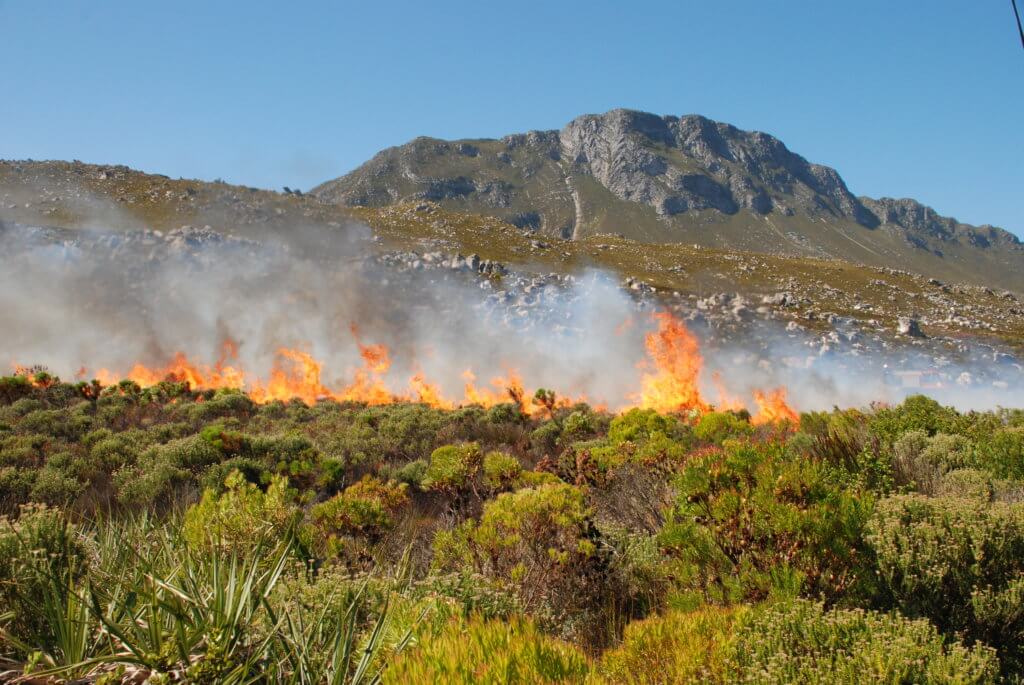
Photo by Jennifer Fill
What can be done?
Conducive weather conditions and flammable fuels set the stage for a fire to take off that day in April. Indeed, there have been record-setting wildfires in Australia, California, and southern coastal South Africa within the last five years, and the occurrence of weather conditions that promote these events is expected to increase with climate change. What can be done to reduce these large wildfires? Although it is impossible to control the weather and difficult to regulate ignition sources, people can manage fuels and purposefully burn them under safe and ecologically appropriate conditions. So why not prescribed fire?
Around the world, there has been growing recognition of the effectiveness prescribed fire to prevent wildfires from burning out of control and threatening human safety and property. Prescribed fire can reduce the fuel loads and fire hazard posed by vegetation. Generally speaking, even if a wildland fire occurs within a few years of a prescribed fire, recently burned vegetation burns with much less intensity and fire is more easily contained than in vegetation that has not burned for a long time.
Increasing the frequency of prescribed fire, however, might be inappropriate in fynbos, which requires about a decade between fires for plants to mature and produce seed. However, the presence of non-native trees over much of the landscape is an even greater risk factor than unburnt native fynbos. So, one approach would be to integrate prescribed fire with active fuel management (removing alien plant fuels) to reduce fuel loads and increase human safety.
In South Africa, numerous calls have been made over the last three decades to use prescribed fire to help control non-native trees, many of which are invasive. Prescribed fire was widely used in the 1970s and 1980s, although tree plantations were still protected. By the 1990s, however, both reduced budgets and increasing concerns about safety and liability greatly decreased organizational capacity for conducting prescribed fires, such that conservation agencies were unable to implement them. The focus shifted primarily to fire suppression. In the meantime, the government’s Working for Water program began actively clearing alien plants throughout the country, but risk-averse behavior under new fire legislation hampered integration of this activity with prescribed burning to encourage native fynbos recovery. Moreover, on the private side, landowners are not legally required to conduct burns on their properties, and those who do wish to burn are often deterred by lack of expertise or legal risks. Private landowners can also rarely afford the money and resources required to clear alien plants from their land and maintain it, or to undertake prescribed burning of large areas of natural vegetation.
In the future, our ability to prevent unwanted large and damaging wildfires will depend on addressing more than just ignitions; it would be more appropriate to focus on managing what burns. At the very least, those living in fire-prone areas can take appropriate measures to make their communities safer, using FireWise™ or FireSmart™ principles.
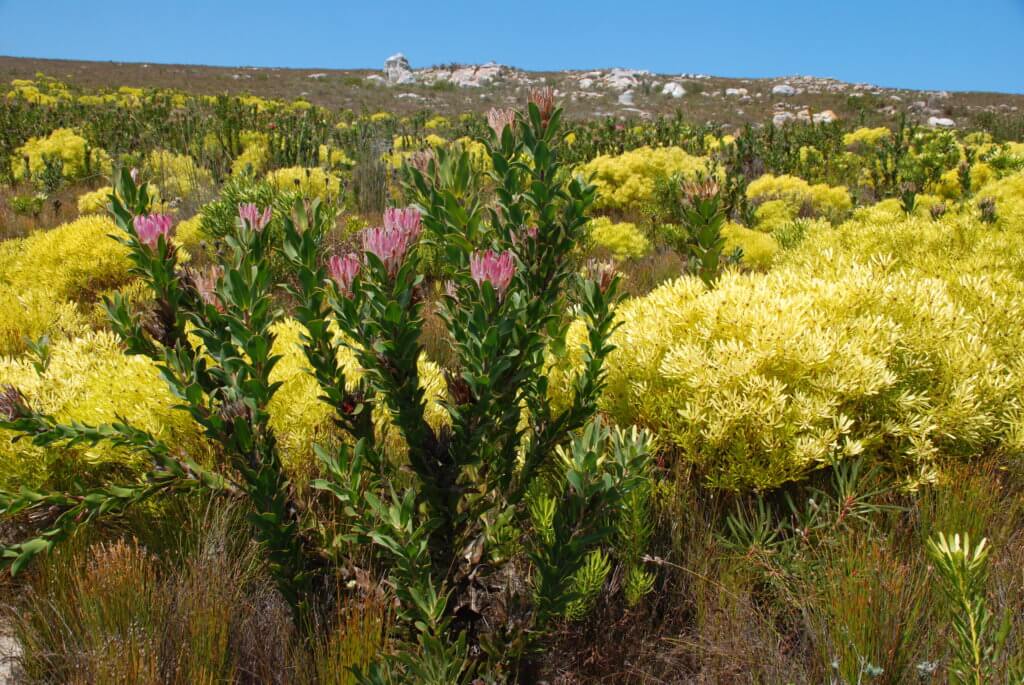
Photo by Jennifer Fill
In South Africa and in other regions highly prone to severe wildfires, removing non-native vegetation and landscaping with certain native plants, reducing flammable material around homes, and using fire-resistant building materials will help reduce the likelihood that important structures will burn.
In South Africa in particular, increasing legal support and organizational capacity for clearing invasive plants and for using prescribed fire safely, including providing resources for training opportunities and supplies, could provide a much longer term and more sustainable solution for managing wildfire risk.
ABOUT THE AUTHORS
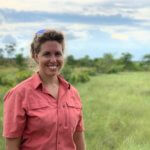 Jennifer Fill received her PhD from the University of South Carolina Columbia where she studied pine savanna fire ecology and restoration. As a postdoc at Stellenbosch University in South Africa, Fill gained several years of experience working in fynbos as a researcher and volunteering as a wildland firefighter. She currently researches plant and fire ecology as a postdoc at the University of Florida, with field studies in both the United States and Belize.
Jennifer Fill received her PhD from the University of South Carolina Columbia where she studied pine savanna fire ecology and restoration. As a postdoc at Stellenbosch University in South Africa, Fill gained several years of experience working in fynbos as a researcher and volunteering as a wildland firefighter. She currently researches plant and fire ecology as a postdoc at the University of Florida, with field studies in both the United States and Belize.
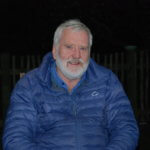 Brian van Wilgen is professor at Stellenbosch University, South Africa; he has four decades of experience as an applied ecologist in southern Africa and beyond. His research has focused on two fields – fire ecology, and invasion ecology. He has conducted work in southern and eastern Africa, and collaborated with others in Australia, Europe, North and South America, and island ecosystems. Van Wilgen has served on numerous editorial boards, the most recent including the journals Conservation Biology, Fire Ecology, International Journal of Wildland Fire, and South African Journal of Science. He has received numerous awards, most recently the South African Academy of Science Gold Medal for excellence in the application of outstanding scientific thinking in the service of society. He is author of more than 200 publications, including four books and 150 peer-reviewed scientific papers.
Brian van Wilgen is professor at Stellenbosch University, South Africa; he has four decades of experience as an applied ecologist in southern Africa and beyond. His research has focused on two fields – fire ecology, and invasion ecology. He has conducted work in southern and eastern Africa, and collaborated with others in Australia, Europe, North and South America, and island ecosystems. Van Wilgen has served on numerous editorial boards, the most recent including the journals Conservation Biology, Fire Ecology, International Journal of Wildland Fire, and South African Journal of Science. He has received numerous awards, most recently the South African Academy of Science Gold Medal for excellence in the application of outstanding scientific thinking in the service of society. He is author of more than 200 publications, including four books and 150 peer-reviewed scientific papers.
